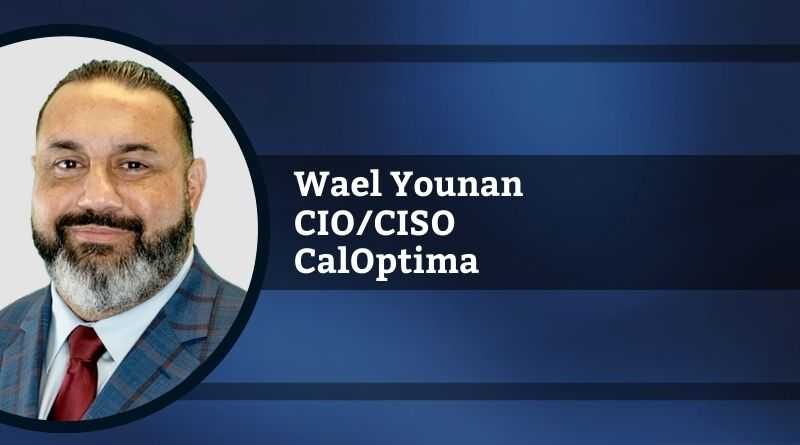Evolution of Health Care Through Digital Transformation
By Wael Younan, Chief Information Officer/Chief Information Security Officer, CalOptima
Depending on your personal beliefs, we were either created or came to be through evolution, but either way, we evolved. We became the most intelligent species on Earth. We developed robust systems for irrigation, housing and infrastructure. We developed methods of communication and transportation that would have seemed impossible to our early ancestors, but we evolved and continue to evolve.
Through technology, we evolved even further. Leveraging technology to integrate systems and people worldwide brings everything closer to home. We work remotely, receive deliveries at our door, have a movie night at home rather than going to the theatre, and get a ride anywhere with just a couple of clicks or taps. We continue to find methods to improve our lives, but what about our health?
The health care space is lacking in evolutionary success, but we’re getting there. Using advancements in science, we can determine ways of genetically resolving or battling the disease. We can transplant organs from one body to another to influence the mortality rate. We can operate on patients to fix “breakdowns” in their systems. However, these examples are simply reactive measures that we take after the fact. The real question is: How can we avoid health issues in the first place and handle preventive care in a more meaningful way?
The COVID-19 pandemic forced us to push mobility forward. Our hospital systems were running at full capacity, and at times, there was simply nowhere to go for treatment. As an industry, we were put in a position to be innovative and do what could be done to continue to provide care. We were forced to adjust — and quickly! We began pushing for telehealth visits with patients from home to keep us from spreading the virus. We began pushing for pharmacy prescriptions to be delivered, just to keep people away from the hospitals.
Oh, and stay away from work, too!
What we found is that it worked. Fewer people got sick when more people were remote for work and medical visits alike. We held down the mortality rate and were still productive while working from home and receiving needed care … but that doesn’t really answer the question I posed above: “How can we avoid these issues in the first place?”
Introducing the evolution of health care. With new technologies come new improvements, and it finally looks like we might be on our way. Leveraging technologies such as Artificial Intelligence and Machine Learning (AI/ML), we can now model millions of people with similar health conditions and make predictions on what they might be susceptible to. We can leverage demographics such as maps, income, education, race, and age, along with other factors to determine the social determinants of health (SDOH) that could negatively impact individuals. We can use variations of these factors to determine the digital divide and digital literacy to assist them with something as simple as a telehealth visit. We’re getting to the point where predictive analytics can help identify people’s risk for diabetes, chronic kidney disease, congestive heart failure, etc., and work on improving the outcome before it becomes life-altering. This is all very exciting, but is there more we can do?
One area where we are still lacking is simply getting an appointment in a reasonable amount of time and getting authorized for treatments more rapidly. Wouldn’t preventive care start with how quickly I can see a doctor? Wouldn’t the doctor be able to see more patients if we could get claims processing done more efficiently? Wouldn’t we all benefit from a more streamlined approach? The answer to these questions is YES!
A combination of workflow optimizations, process automation, AI/ML modeling and predictive analytics could just be the answer.
Imagine if we could get process automation to make treatment authorizations based on insurance coverage, previous authorizations and current health factors, and provide a decision in seconds, not days or weeks. Imagine if we could also expedite claims processing, providing doctors with payment for their services quickly and efficiently. Finally, imagine if we could provide assistive data elements about patients, their current conditions, risk scores to their health and factors that influence them, enabling doctors to make more informed decisions.
This is what the future of health care looks like!
If Netflix can provide recommendations about what I might want to watch next based on my viewing history, and Uber Eats can offer discounts on food I’ve ordered in the past, then why can’t my doctor help me decide on prevention techniques based on my past behavior as well? If my bank can categorize my monthly spending, why can’t health care providers categorize my risk of disease or complications based on what they already know about me and others with similar demographics to me?
The technology is finally here. All that is required is a mindset adjustment, innovative approaches to make bold moves, and a focus that is needed in health care, to help people live longer, happier, healthier lives. The time is now, and we’re well on our way to digital health care for the greater good of people across the globe.

